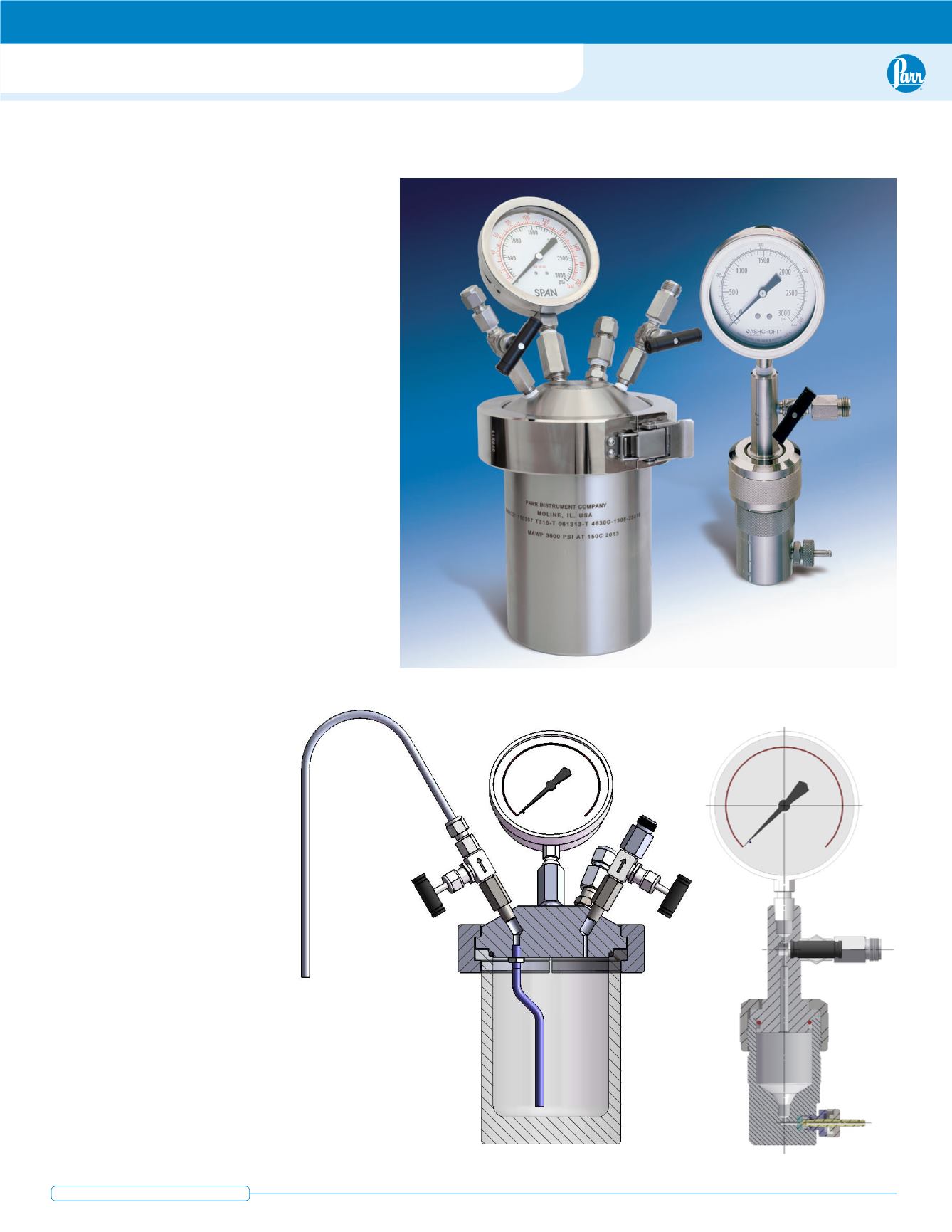
P
arr stainless steel vessels for processing cell
suspensions by the nitrogen decompression
method are made in several sizes with full
opening heads and self-sealing closures which can
be handled easily on any laboratory bench without
special tools or fixtures. Each vessel has two
valves and a pressure gage: one valve for charging
with nitrogen and the other for withdrawing the
homogenate and discharging it through an attached
delivery tube. All of the fittings as well as the vessel
itself are made of stainless steel with polished
surfaces for good corrosion resistance and freedom
from contamination. The individual parts are easily
cleaned and can be thoroughly sterilized.
Designs For Large
and Small Samples
These vessels are made in five different sizes to
accommodate samples ranging from 0.5 mL
to 5 liters, as listed in the table on page 4. The
maximum charging capacity for each vessel is
limited to two-thirds of the internal volume of the
vessel, but smaller samples can be treated in any
of these vessels by simply placing the sample in
a beaker or test tube and positioning it under the
dip tube within the vessel.
The 4635, 920 mL vessel is
the general purpose model with
a capacity for treating samples
ranging in size from a few milli-
liters up to 600 mL.
The 4639, 45 mL vessel is
designed specifically for small
samples from 30 mL down to
less than one milliliter. It has a
tapered bottom which drains
directly into the discharge valve,
ensuring complete recovery of
all of the sample.
The larger vessels, 4636,
4637, and 4638, are intended for
large volume applications. Users
are urged to run preliminary
experiments in the 4635 Vessel
to confirm the suitability of the
procedure before scaling up to
these larger sizes.
Model 4635
Model 4639
Cell Disruption Vessels in Five Convenient Sizes
B u l l e t i n 4 6 3 5
3
1 - 8 0 0 - 8 7 2 - 7 7 2 0
Cell Disruption Vessels
C e l l D i s r u p t i o n V e s s e l s
Model 4635 and Model 4639 Parr Cell Disruption Vessels


